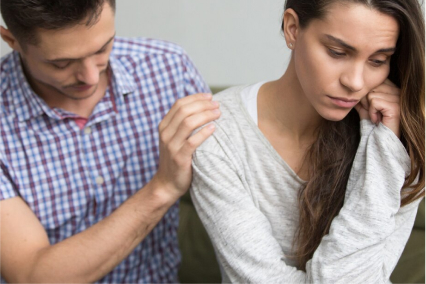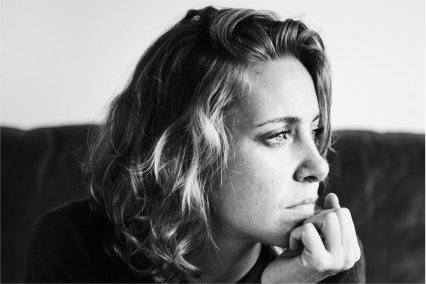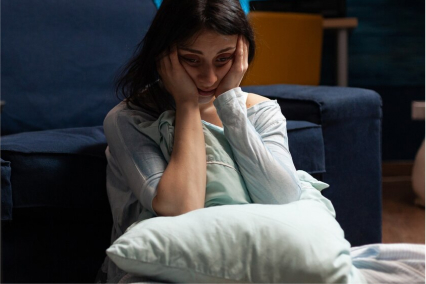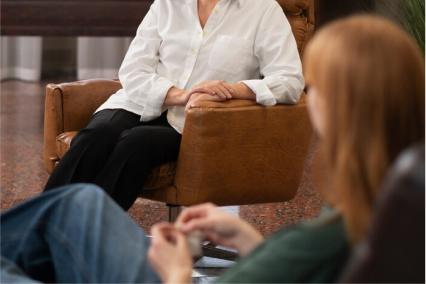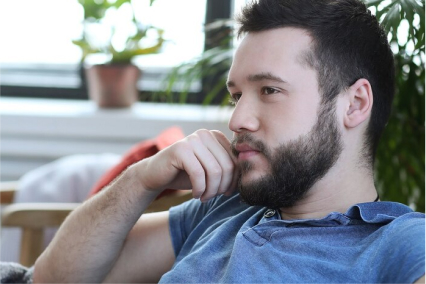What Is Primary Insomnia?
Primary insomnia is a decreased ability to fall asleep and/or stay asleep, with resulting daytime effects of sleep deprivation, such as fatigue, dozing off, and irritability. The sleep problems of primary insomnia are not associated with lifestyle habits or a medical or psychiatric cause. Primary insomnia is diagnosed using DSM-5 and the International Classification of Sleep Disorders, 3rd Edition (ICSD-III) classification criteria. Primary insomnia is a type of chronic insomnia as defined by the ICSD-III, and it tends to persist or recur for many years throughout a person’s life, often beginning during childhood.
This type of insomnia is usually idiopathic, although it can be impacted by mild to moderate stress. Primary idiopathic insomnia occurs without any identifiable cause and in the absence of anxiety. And people who have a history of primary insomnia may also have episodes of sleep state misperception (SSM), also known as paradoxical insomnia. With paradoxical insomnia, a person feels that they are experiencing insomnia, although they are getting enough sleep and don’t experience daytime signs of sleep deprivation. SSM is believed to affect 9% to 50% of the adult population, and it is more common among people who also have bouts of primary insomnia.
Primary insomnia has 3 subtypes: idiopathic, stress-related, and SSM. Idiopathic insomnia is true without any identifiable contributory factor, while stress-related insomnia can be characterized by mild stress, such as rumination or other thoughts throughout the night. Someone who has had episodes of idiopathic insomnia can also experience worsening symptoms when dealing with mild stressors can experience SSM during phases of adequate sleep.

The frequency of sleep symptoms can vary—primary insomnia can occur occasionally or frequently, and it can affect someone for just 1 night at a time or for many nights in a row. An individual affected by the condition can have trouble sleeping, may toss and turn in bed, or may get up from bed at night. Symptoms can also include 1 or more episodes of waking up during the night, often for less than an hour in total. People who have primary insomnia may be very concerned about the causes and effects of not getting enough sleep, and sleep anxiety can exacerbate insomnia.
A diagnostic workup of insomnia includes a medical history, physical examination, and diagnostic tests. Daytime symptoms can include restlessness, feeling tired, falling asleep easily during waking hours, trouble concentrating, moodiness, and sadness. These symptoms are not usually present in SSM. A sleep study may show delayed sleep latency, sleep fragmentation, decreased sleep efficiency, and reduced total sleep time in patients who have idiopathic primary insomnia. A sleep study would not be expected to show any abnormalities in SSM.
Signs and symptoms of primary insomnia
Idiopathic primary insomnia symptoms:
- Insomnia is long-standing, typically beginning in early childhood.
- Persons with idiopathic insomnia often complain of difficulties with attention or concentration or hyperactivity.
- Emotionally, persons with childhood-onset insomnia are often repressors, denying and minimizing emotional problems.
- Individuals often show atypical reactions, such as hypersensitivity or insensitivity, to medications.
- Insomnia tends to persist over the entire life span and can be aggravated by stress or tension.
Psychophysiological primary insomnia symptoms:
- Sleep disturbance varies from mild to severe.
- Sleeplessness may manifest as difficulty falling asleep or as frequent awakenings in the night.
- Persons with insomnia often find that they can sleep well anywhere else but in their own bedroom.
- Persons with this type of insomnia tend to be more tense and dissatisfied compared to good sleepers. Emotionally, they are typically repressors (suppress their feelings), denying problems.
Sleep state misperception: Persons complain of insomnia subjectively, while sleep duration and quality are completely normal. They typically do not display daytime sleepiness or other signs of poor-quality sleep. These people may be described as having “sleep hypochondriasis.” They may subsequently develop anxiety and depression.
What causes primary insomnia?
Sleeplessness without any medical, psychological, or environmental cause can be divided into the following three subgroups:
Psychophysiological insomnia
In a person with previously adequate sleep, sleeplessness begins because of a prolonged period of stress. Tension and anxiety resulting from the stress cause awakening. Thereafter, sleep in such persons becomes associated with frustration and arousal, resulting in poor sleep hygiene. In most people, as the initial stress decreases, normal sleep habits are gradually restored because the bad sleep habits are not reinforced. However, in some people, the bad habits are reinforced, the person “learns” to worry about his or her sleep, and sleeplessness continues for years after the stress has subsided. Therefore, it is also called learned insomnia or behavioral insomnia.
Idiopathic insomnia
Lifelong sleeplessness is attributed to an abnormality in the neurologic control of the sleep-wake cycle involving areas of the brain responsible for wakefulness and sleep. It may begin in childhood. Those affected may have a dysfunction in the sleep state that predisposes the person towards arousal.
Sleep state misperception
The person complains of insomnia without objective evidence or symptoms of any sleep disturbance.

How is primary insomnia diagnosed?
Exams and tests may be done to rule out medical (for example, pain caused by arthritis or cancer) and psychiatric conditions that may cause insomnia.
The health care professional takes a thorough clinical interview with the person and his or her sleep partner regarding the person’s sleep habits.
The person may be asked to maintain a sleep diary. In this diary, the person describes the previous night’s sleep. Data from the sleep diary may help minimize distortions in sleep information recalled in the health care professional’s office.
Polysomnography (overnight sleep study test)
It is not recommended for the routine evaluation of sleeplessness but may be used in special circumstances (for example, to rule out causes of insomnia).
Psychophysiological insomnia and idiopathic insomnia manifest as increased sleep latency (taking a long time to fall asleep), reduced sleep efficiency, and increased number and duration of awakenings.
Sleep state misperception manifests as normal sleep latency (15 to 20 minutes), a normal number of arousal and awakenings, and normal sleep duration (6.5 hours).
Idiopathic insomnia, previously called childhood-onset insomnia, is defined as a lifelong difficulty in initiating and maintaining sleep and resulting in poor daytime functioning. Psychophysiological insomnia is chronic insomnia resulting from learned, sleep-preventing associations and increased tension or agitation. People with sleep state misperceptions report insomnia and sleeplessness but do not have objective evidence of a sleep disorder.
Multiple sleep latency test
In this test, the time taken by a person to fall asleep (sleep latency) during the day while lying in a quiet room is measured. In persons with sleep state misperception, this test shows normal daytime vigilance. Vigilance in this sense means a wakeful or alert state. The test shows that the person does not have increased or decreased sleep latency time (time required to fall asleep).
Sleep state misperception can only be diagnosed in the laboratory because of the need to document that sleep duration and quality are normal when a person describes having poor sleep.
Treatment Options For Primary Insomnia
Treatments for primary insomnia include lifestyle modification, therapy, and prescription medications. Non-medical therapies include counseling, cognitive behavioral therapy, biofeedback, avoiding naps or inconsistencies in sleep schedule, managing caffeine and alcohol intake, and avoiding stimulation from factors like bright lights before sleep. Medications commonly used for the treatment of primary insomnia include benzodiazepines, antihistamines, and melatonin
Medications or Supplements for Help Treat or Cure Primary Insomnia
Antidepressants are indicated for use in persons with insomnia associated with psychiatric disorders or persons who have a previous history of substance abuse. Sedating (sleep-inducing) antidepressants, such as trazodone and nefazodone, are sometimes used at bedtime in small doses (50 mg). They are not associated with tolerance or withdrawal.
Melatonin stimulants
Ramelteon (Rozerem) is a prescription drug that stimulates melatonin receptors. Melatonin is a hormone produced by the pineal gland (located in the brain) during the dark hours of the day-night cycle (circadian rhythm). Melatonin levels in the body are low during daylight hours. The pineal gland responds to darkness by increasing melatonin levels in the body. This process is thought to be integral to maintaining circadian rhythm. Ramelteon promotes the onset of sleep and helps normalize circadian rhythm disorders. Ramelteon is approved by the FDA for insomnia characterized by difficulty falling asleep.
Over-the-counter Medications
The active agent in many over-the-counter medications is one of the sedating antihistamines (drugs used for the treatment of allergies). They are generally safe but have side effects such as dry mouth, blurred vision, urinary retention, and confusion in older persons. They are also only mildly effective in inducing sleep and may reduce sleep quality. Therefore, these drugs should not be used on a routine basis. There is no scientific evidence that herbal or “natural” substances are effective at promoting sleep.
Melatonin is a hormone that is thought to induce sleep. Studies have shown that melatonin may be useful for short-term adaptation to jet lag or other circadian rhythm sleep disorders. This hormone is produced by the pineal gland (located in the brain) in response to darkness, and it may be an important part of an individual’s “biologic clock.”
Melatonin may be particularly useful for individuals with conditions that do not produce sufficient melatonin in response to darkness, such as blindness. The effectiveness of melatonin for long-term sleeplessness is less clear. Melatonin is sold over the counter and, therefore, is not controlled by the FDA. The optimal dose and its long-term adverse effects are also not known.

Therapies for Primary Insomnia
Behavioral therapy: Behavioral therapy is now considered the most appropriate treatment for persons with sleeplessness without any medical, psychiatric, or environmental cause. It consists primarily of short-term cognitive-behavioral therapies. The focus is primarily on sleep hygiene or factors presumed to cause insomnia. As such, these therapies seek to modify maladaptive sleep habits and educate persons about healthier sleep practices.
Stimulus control therapy: The purpose of this therapy is to re-establish the connection between the bed and sleep by prohibiting the person from engaging in nonsleep activities while in bed. The following instructions are given:
- Go to bed only when sleepy.
- Use the bed and bedroom only for sleep and intimacy.
- Avoid trying to force sleep (go into another room whenever unable to fall asleep within 20 to 30 minutes, and return to bed only when sleepy again).
- Get up at the same time each morning regardless of how much one has slept the previous night.
- Avoid daytime napping.
Sleep restriction therapy: This involves limiting the amount of time the person spends in bed to the actual amount of time the person usually spends sleeping. This results in sleep deprivation, which accumulates and causes more rapid sleep onset on subsequent nights. As sleep improves, the person is allowed to gradually increase time in bed by 15 to 30 minutes.
Relaxation therapies: The person is taught to identify and control tension. Relaxation-based interventions are advised based on the observation that persons with insomnia often display high levels of arousal both at night and during the daytime. The various techniques available to deactivate the arousal system are:
- The person is taught progressive muscle relaxation through a series of exercises that consist of first tensing and then relaxing each muscle group in a systematic way.
- The biofeedback technique is a training technique that enables an individual to gain some element of voluntary control over certain body parameters (for example, heart rate, rate of breathing). This technique provides immediate feedback regarding the levels of tension and teaches a person how to relax in a short time.
- Imagery training and thought stopping teach the person how to focus on neutral or pleasant things instead of focusing on racing thoughts.

Cognitive therapy: This consists of identifying person-specific activities associated with thinking that disrupts sleep, challenging their validity, and replacing them with substitutes such as reattribution training (a simple technique that has been used successfully to help persons to recognize that their minds play a part in causing their physical symptoms), reappraisal, and attention shifting.
Paradoxical intention: This method consists of persuading a person to engage in his or her most feared behavior (for example, staying awake). This serves to eliminate performance anxiety so that sleep may come more easily.
Reclaim Your Life From Primary Insomnia
Primary Insomnia is a condition that should not be taken lightly. We Level Up California rehab institute can provide you, or someone you love, treatment with professional and safe care. Feel free to call us to speak with one of our counselors. We can inform you about this condition by giving you relevant information. Our specialists know what you are going through. Please know that each call is private and confidential.
Sources
[1] Momin RR, Ketvertis K. Primary Insomnia. StatPearls [Internet]. Treasure Island (FL): StatPearls Publishing; 2020. https://www.ncbi.nlm.nih.gov/books/NBK554516/
[2] Martucci M, Conte M, Ostan R. Both objective and paradoxical insomnia elicit a stress response involving mitokine production. Aging (Albany NY). 2020;12(11):10497-10505. https://pubmed.ncbi.nlm.nih.gov/32420904/
[3] Melo DLM, Carvalho LBC, Prado LBF, Prado GF. Biofeedback Therapies for Chronic Insomnia: A Systematic Review. Appl Psychophysiol Biofeedback. 2019;44(4):259-269. https://pubmed.ncbi.nlm.nih.gov/31123938/
[4] Taherzadeh Z, Khaluyan H, IranshahyM. Evaluation of sedative effects of an intranasal dosage form containing saffron, lettuce seeds and sweet violet in primary chronic insomnia: A randomized, double-dummy, double-blind placebo-controlled clinical trial. J Ethnopharmacol. 2020;262:113116 Epub ahead of print. https://pubmed.ncbi.nlm.nih.gov/32736046/
[5] Akram M, Daniyal M, Munir N, et al. Medicinal Plants Combating Against Insomnia: A Green Anti-Insomnia Approach. J Nerv Ment Dis. 2019;207(11):927-935. https://pubmed.ncbi.nlm.nih.gov/31663928/

